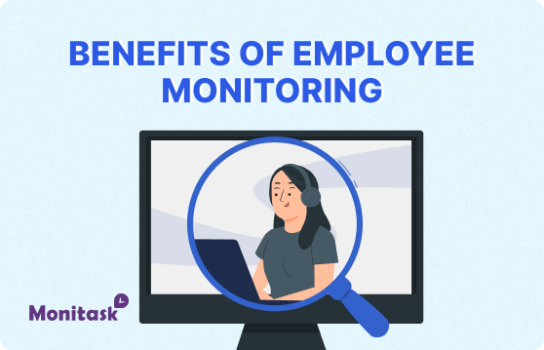Employee Handbook
Understanding the Employee Handbook: A Comprehensive Guide
In the realm of human resources and organizational management, few documents hold as much significance as the employee handbook. This crucial resource serves as a roadmap for employees, outlining the company's policies, procedures, and expectations. Let's delve into the intricacies of the employee handbook, exploring its purpose, contents, and impact on the workplace.
What is an Employee Handbook?
An employee handbook, also known as a staff manual or company policy manual, is a document that communicates an organization's mission, policies, and expectations. It serves as a go-to guide for employees, providing them with essential information about their rights, responsibilities, and the company's operational procedures.
This comprehensive document is typically distributed to new hires during the onboarding process, but it remains a valuable resource throughout an employee's tenure. It's not just a collection of rules; it's a reflection of the company's culture, values, and commitment to its workforce.
The Importance of an Employee Handbook
An well-crafted employee handbook is more than just a formality; it's a powerful tool that can significantly impact workplace dynamics and organizational success. Here's why it's so crucial:
1. Clear Communication
The handbook serves as a central source of information, ensuring that all employees have access to the same set of rules and guidelines. This clarity helps prevent misunderstandings and promotes consistency across the organization.
2. Legal Protection
By clearly outlining policies and procedures, an employee handbook can help protect the company from potential legal issues. It demonstrates the organization's commitment to fair treatment and compliance with labor laws.
3. Employee Empowerment
When employees have easy access to information about their rights, benefits, and responsibilities, they feel more empowered and confident in their roles.
4. Culture Building
The handbook is an opportunity to communicate the company's mission, vision, and values, helping to foster a strong organizational culture.
5. Onboarding Tool
For new hires, the handbook serves as an invaluable resource during the onboarding process, helping them acclimate to their new environment more quickly.
Key Components of an Employee Handbook
While the specific contents of an employee handbook may vary depending on the organization's size, industry, and culture, there are several key components that are typically included:
1. Welcome Message and Company Overview
This section introduces new employees to the organization, providing a brief history, mission statement, and overview of the company's values and culture.
2. Employment Policies
This crucial section covers a wide range of topics, including:
- Equal Employment Opportunity (EEO) statement
- Anti-discrimination and anti-harassment policies
- Employment classification (full-time, part-time, exempt, non-exempt)
- Probationary period details
- Performance evaluation procedures
- Promotion and transfer policies
3. Compensation and Benefits
Here, the handbook outlines the company's approach to compensation, including:
- Pay periods and methods
- Overtime policies
- Health insurance options
- Retirement plans
- Paid time off (vacation, sick leave, personal days)
- Family and Medical Leave Act (FMLA) policies
- Other perks and benefits
4. Code of Conduct
This section sets expectations for employee behavior, covering areas such as:
- Dress code
- Attendance and punctuality
- Conflict of interest
- Confidentiality and data protection
- Use of company property and technology
- Social media guidelines
5. Health and Safety Policies
Ensuring a safe work environment is paramount. This section typically includes:
- Workplace safety guidelines
- Emergency procedures
- Accident reporting protocols
- Drug and alcohol policies
6. Disciplinary Procedures
Clear guidelines on disciplinary actions help maintain order and fairness. This section often covers:
- Progressive discipline steps
- Grounds for immediate termination
- Grievance procedures
7. Termination Policies
While not the most pleasant topic, it's important to outline procedures for ending employment, including:
- Resignation process
- Exit interview procedures
- Final paycheck policies
- Continuation of benefits (COBRA)
Creating an Effective Employee Handbook
Crafting a comprehensive and effective employee handbook requires careful planning and execution. Here are some best practices to consider:
1. Keep it Clear and Concise
While the handbook needs to be comprehensive, it should also be easy to read and understand. Use plain language and avoid jargon whenever possible.
2. Ensure Legal Compliance
Policies should align with federal, state, and local laws. It's advisable to have the handbook reviewed by legal counsel to ensure compliance.
3. Make it Accessible
In addition to providing physical copies, consider making the handbook available digitally for easy access and searchability.
4. Include a Disclaimer
Clearly state that the handbook is not a contract and that the company reserves the right to modify policies as needed.
5. Regularly Update
The handbook should be a living document, updated regularly to reflect changes in laws, company policies, or industry standards.
6. Obtain Acknowledgment
Have employees sign an acknowledgment form indicating they've received and read the handbook.
Common Challenges in Employee Handbook Creation
While creating an employee handbook is crucial, it's not without its challenges. Here are some common hurdles organizations face:
1. Balancing Detail and Readability
It's important to provide comprehensive information without overwhelming employees. Finding the right balance can be tricky.
2. Keeping Up with Legal Changes
Employment laws are constantly evolving. Staying current and updating the handbook accordingly requires ongoing effort.
3. Addressing Industry-Specific Needs
Different industries may have unique requirements or best practices that need to be incorporated into the handbook.
4. Culturel Sensitivity
For multinational companies, ensuring the handbook is culturally appropriate across different regions can be challenging.
5. Communicating Updates
When policies change, effectively communicating these updates to all employees is crucial but can be logistically challenging.
The Future of Employee Handbooks
As the workplace continues to evolve, so too will the nature of employee handbooks. Here are some trends shaping the future:
1. Digital Transformation
Many companies are moving towards digital handbooks, which are easier to update and access. Some are even exploring interactive formats or mobile apps.
2. Personalization
Advanced HR systems may allow for more personalized handbooks, tailoring content based on an employee's role, location, or other factors.
3. Inclusivity and Diversity
There's an increasing focus on creating handbooks that reflect and support diverse workforces, including policies on inclusion, accessibility, and cultural sensitivity.
4. Remote Work Policies
With the rise of remote and hybrid work models, handbooks are expanding to address the unique challenges and expectations of distributed teams.
5. Continuous Feedback
Some organizations are moving away from annual performance reviews towards continuous feedback models, which may be reflected in updated handbook policies.
Conclusion
The employee handbook is far more than a mere collection of rules and regulations. It's a powerful tool that, when crafted thoughtfully, can significantly contribute to a positive, productive, and legally compliant work environment. By clearly communicating expectations, rights, and responsibilities, it empowers employees and helps create a cohesive organizational culture.
As the workplace continues to evolve, so too will the nature and content of employee handbooks. However, their fundamental purpose – to serve as a guidepost for the employer-employee relationship – will remain unchanged. Organizations that invest time and resources into creating comprehensive, clear, and up-to-date handbooks will find themselves well-equipped to navigate the complexities of modern workforce management.
Remember, an employee handbook is not just a document – it's a reflection of your company's values, culture, and commitment to its most valuable asset: its people. By approaching its creation and maintenance with care and diligence, you're laying the foundation for a thriving, harmonious workplace where everyone understands their role in the organization's success.


